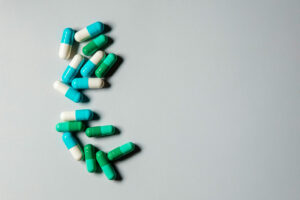THE GOVERNMENT is still trying to determine the sources of counterfeit medicine proliferating in the Philippines, as it seeks to address US concerns about the authenticity of drugs currently in circulation.
“The problem is we don’t know where these counterfeit medicines are coming from,” Trade Secretary Alfredo E. Pascual told reporters on the sidelines of the Gawad Yamang Isip Awards late Monday.
“These may be coming here to the Philippines and not necessarily being produced in the country, so that needs to be investigated properly,” Mr. Pascual said.
He said that the investigation can be launched once manufacturers whose brands are being counterfeited file complaints.
“The problem is if there will be no complainant, but motu proprio, we can do the investigation if that is damaging the image of the country,” he added.
The US Trade Representative (USTR) released last week its Special 301 Report, which lists countries where the US has intellectual property protection and enforcement concerns.
The 2024 list marked the 11th year the Philippines remained off the US piracy watchlist.
However, the Philippines was cited for growing concerns about the manufacture and distribution of counterfeit pharmaceutical products.
Citing a study by the Organisation for Economic Cooperation and Development and the European Union Intellectual Property Office, the USTR said that the Philippines was one of the leading sources of counterfeit medicines distributed globally.
Intellectual Property Office of the Philippines (IPOPHL) Director General Rowel S. Barba said the issue of counterfeit medicine has been a concern of the US for around four years.
Mr. Barba said that in response to the report, Philippine authorities have explained to the US that the Philippines’ drug manufacturing industry is small, making it less likely that the Philippines is the source of counterfeits.
“In our coordination with the Food and Drug Administration (FDA), we found out that they also do not have reports of the manufacture of counterfeit medicines here in the Philippines,” he said.
“Our guess is that the Philippines has become a transhipment point to the US, and this is what we also told them, but still the issue has not been removed from the report,” he added.
He said that since the Philippines has been cited again on the counterfeit medicine issue in the 2024 report, there is a need for IPOPHL to think of new ways to assure the USTR.
“So, we decided to (work) with the Pharmaceutical and Healthcare Association of the Philippines (PHAP) so that we can get data from them and verify if there are really people in the Philippines that manufacture fake medicines,” he added.
Mr. Barba said the counterfeits were mostly over-the-counter medicines, which the FDA has verified were not manufactured in the Philippines. — Justine Irish D. Tabile
